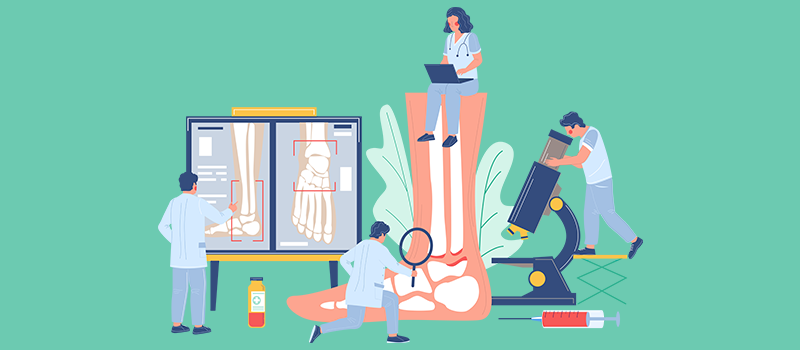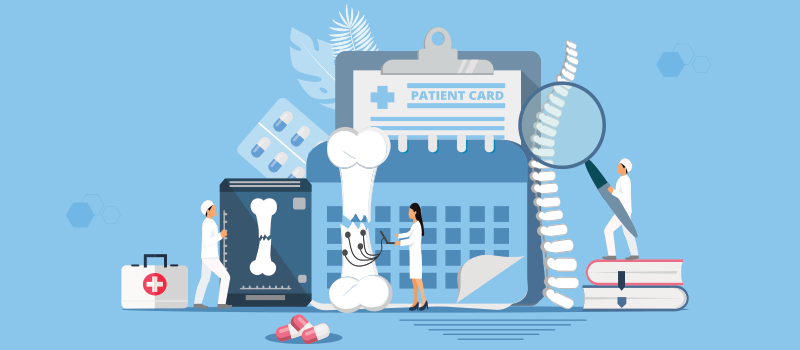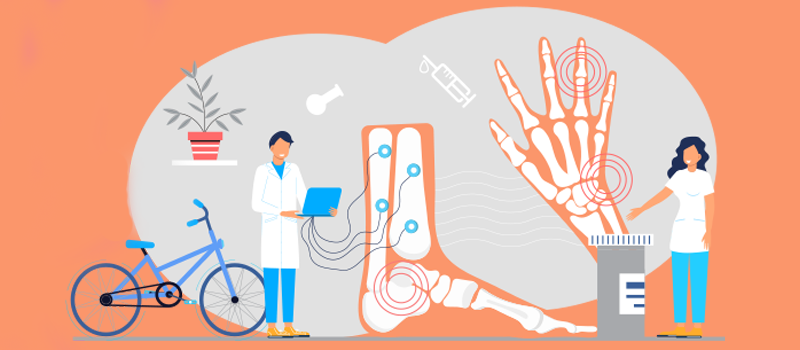What’s the Buzz
The Bee Healthy Blog
Why Are Biologics So Expensive?

Some of the best-selling drugs in recent years have been biologics. But these drugs are also some of the most expensive. To demonstrate, the biologic drug Humira (generic name adalimumab), which is used to treat autoimmune diseases like rheumatoid arthritis and Crohn’s disease, costs over $6,000 for 1 carton (2 pens) without insurance. The cost of other biologic drugs like Opdivo, Enbrel, Keytruda, Herceptin, Rituxan, and Avastin can also run into thousands of dollars.
So, what are biologic drugs, and why are they so expensive? Please continue reading to find out.
What are biologics for rheumatoid arthritis?
Rheumatoid arthritis (RA) is a chronic inflammatory autoimmune disease when your immune system attacks the lining of the joints (the synovium); this disease typically affects the joints of the hands, ankles, and knees on both sides of the body. The hallmark symptoms of RA are persistent joint pain, tenderness, inflammation, stiffness, and swollen joints that last for six weeks or longer, leading to progressive joint damage over time. Sometimes, in severe cases, RA can affect other body organs such as the lungs, the heart, or the eyes.
Traditionally, the treatment for rheumatoid arthritis has consisted of a combination of NSAIDs (non-steroidal anti-inflammatory drugs) like ibuprofen (Advil, Aleve), steroid medicines like prednisone, and the conventional DMARDs (disease-modifying anti-rheumatic drugs) like methotrexate (Trexall), leflunomide (Arava), or hydroxychloroquine (Plaquenil).
Compared to the conventional DMARDs, biologics are a newer class of DMARDs. Over the past few years, biologic drugs have steadily become increasingly popular as the treatment modality for severe RA and other autoimmune disorders due to their efficacy, despite their high cost.
The biological drug category covers various products such as vaccines and cell and gene therapies. Specifically for the treatment of RA, there are different types of biologics with different mechanisms of action to slow down the disease progress of RA.
For example, certain biologics target specific components of the body’s immune system that drive inflammation. Biologic agents are very effective in reducing the signs and symptoms of RA and slowing disease progression. They are typically reserved for patients in whom other treatments, such as the conventional DMARDs, have not worked.
However, biologics are expensive drugs, often costing thousands of dollars a year. Experts estimate that biologics account for about 2% of drugs on the market but are responsible for 37% of all drug spending in the US.
Why do biologics cost more than most drugs?
There are several reasons why biologic costs more than other drugs. Firstly, biologic drugs are manufactured using various natural sources from humans, animals, and even living organisms. The final biologics agents are composed of proteins, sugars, DNA, or even living cells. Needless to say, they are made through a very complex manufacturing process. Therefore, it costs more for drug manufacturers to make biologics than other drugs like the conventional DMARDs, which are chemically synthesized.
Secondly, the funding for research and development of biologics is substantially higher than most drugs, often running into hundreds of millions of dollars for a single biologic agent. This is because biologics are made using genetic modification technology, which allows them to target specific parts of the body’s immune system.
A third reason biologics are so expensive is that there isn’t much competition for biologic drug manufacturers from other pharmaceutical companies. Another factor to consider is that some biologics are developed to solve fundamental barriers in treating rare diseases. As a result, no similar drugs from other pharmaceutical companies are available. Also, biologics are structurally and chemically complex and cannot be easily replicated. Therefore, unlike most brand-name drugs for which cheaper generic versions are available, many biologics are brand names protected by patent laws. As a result of this monopoly, drug manufacturers can charge high prices for biologics.
Lastly, the administration route of biologics also plays a role in drug costs. Many biologics must be given by subcutaneous injection (under the skin) or intravenous (IV) infusion. Intravenous infusion will take place in a doctor’s office or an outpatient infusion center. The drug is also temperature-sensitive, which affects the final drug cost due to the need for proper storage. In contrast, conventional DMARDs such as methotrexate or hydroxychloroquine can be taken by mouth at home; thus, there is no associated cost for temperature-controlled storage or administration fee.
How expensive are biologic drugs?
Biologic drugs can cost $10,000 to $30,000 per year on average. The most expensive biologics can cost over $500,000. The life-saving biologic medicine Zolgensma made the news recently because it costs $2.1 million for a one-time treatment of spinal muscular atrophy, a rare childhood disorder.
What is the cheapest biologic?
The cheapest or relatively cheaper biologics are the “copycat versions” of biologic drugs called biosimilars. To date, the U.S. Food and Drug Administration (FDA) has approved 37 biosimilar drugs. To understand the idea of biologics vs. biosimilars, let’s think about brand-name drugs and their generic counterparts--generic drugs contain the same active ingredients as brand-name medicines. Biologics and biosimilars are interchangeable terms because biosimilars are very close in structure and functionality compared to their biologic counterparts, and there are no clinically meaningful differences between the two products. Some examples of less expensive biosimilars are listed below:
- Inflectra and Renflexis (original biologic Remicade)
- Nivestim and Zarxio (original drug Neupogen)
- Zirabev and Mvasi (original drug Avastin)
- Herzuma, Ogivri, Kanjinti, and Trazimera (original drug Herceptin)
- Truxima and Ruxience (original drug Rituxan)
- Eticovo (original drug called Enbrel)
- Retacrit (original drug Epogen/Procrit)
- Udenyca, Fulphila, Ziextenzo (original drug Neulasta)
Will biologics get cheaper?
It seems unlikely that expensive biologics will get substantially cheaper in the near future. For most drugs, generic medications are up to 85% cheaper than brand-name versions. However, the price difference between original biologics and the cheaper versions (biosimilars) is only 10-30%. This is one of the reasons biosimilars remain less widely available, leading to limited patient access. Nonetheless, more biosimilars are on the way, and prices may come down with biosimilar competition.
Other options like small molecule drugs may also make biologic treatment more affordable. If you are wondering what a small molecule drug is, it is just the scientific term for everyday “medicine cabinet” drugs. The majority of medications on the market right now are small molecule drugs. With their simple chemical structures, the manufacturing process for a small molecule drug is a lot less costly compared to the making of biologics. Another advantage is that small molecule drugs are stable when taken by mouth--a major plus for patient compliance. Even with biologics being in the spotlight, major research and funding for small molecule drugs continue to thrive--this is a positive aspect for patients’ overall health outcomes since it can help bring down the cost of biologics.
Are biologics worth the price?
Biologics may be worth the price for many patients. The treatment of cancers like breast cancer and autoimmune diseases like rheumatoid arthritis, especially the severe cases, has been transformed by the introduction of targeted biologic agents. Drug cost and insurance coverage continue to be major limiting factors in the use of biologics.
There is no doubt that biologic agents are significantly more expensive compared to conventional DMARDs (disease-modifying antirheumatic drugs) used for the treatment of rheumatoid arthritis. However, biologic drugs can result in a significant improvement in RA symptoms while slowing down the disease progression. As a result, biologic drugs improve the function and quality of life for many patients with rheumatoid arthritis and other autoimmune disorders. This can offset the high cost of biologic drugs in the long run and make them worth the price. Keep in mind that certain drug manufacturers offer coupons and drug assistance programs, talk to your healthcare team for different available resources to help with the drug cost.
References:
- https://www.ncbi.nlm.nih.gov/pmc/articles/PMC3707489/
- https://jamanetwork.com/journals/jamanetworkopen/fullarticle/2764808
- https://www.fda.gov/drugs/biosimilars/biosimilar-product-information
- https://www.arthritis.org/diseases/rheumatoid-arthritis
- https://medicalaffairsspecialist.org/blog/5-reasons-biologics-remain-expensive
- https://www.thepharmaletter.com/article/fda-approves-cimerli-first-interchangeable-biosimilar-to-lucentis
- https://www.fda.gov/consumers/consumer-updates/biosimilar-and-interchangeable-biologics-more-treatment-choices












SOCIAL